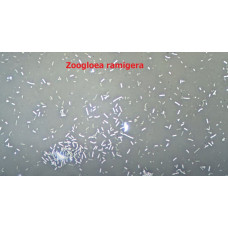From Poly... and Greek saprós, rotten, and bíos, life.
Polysaprobes are organisms that grow in significant numbers only in highly polluted waters that contain a large amount of easily decomposable organic matter.
Organisms living in water heavily polluted with organic substances - rivers and closed reservoirs into which domestic and waste water of factories and plants processing organic substances is discharged. The habitat of polysaprobes is characterized by the presence of significant amounts of proteins and polypeptides, as well as carbohydrates, lack of oxygen and accumulation of carbon dioxide, hydrogen sulfide, methane in the water. The change of communities of organisms in such waters is often catastrophically rapid. Typical polysaprobes include Zoogloea ramigera and Beggiatoa alba, Oicomonas mutabilis, Paramaecium putrinum and Vorticella microstoma; facultative ones include Sphaerotilus natans, Polytoma uvella; Tubifex tubifex. Polysaprobes are characterized by monotonous species composition, with a huge number of individuals of those species that were able to adapt to harmful environmental conditions. Among polysaprobes there are many saprophytes, including bacteria and their consumers. The importance of polysaprobes in the life of a water body is very great. They decompose organic substances and carry out biological treatment of wastewater.
Polysaprobes
Tags: polysaprobes


